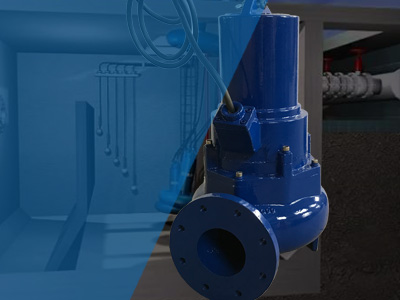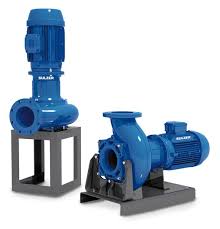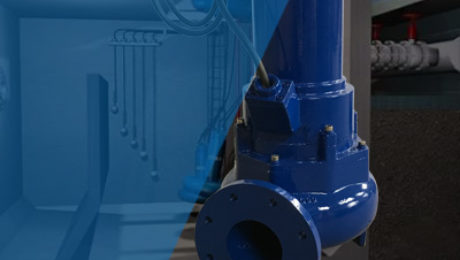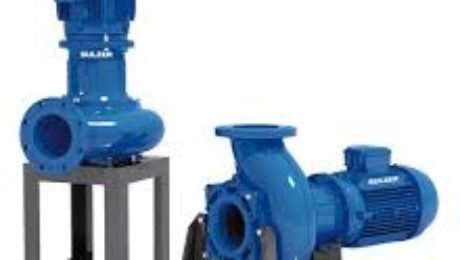Stainless steel self-priming pump routine maintenance knowledge
The stainless steel self-priming pump is a common pump valve with simple and reliable structure and durability. However, quality products and equipment also require regular maintenance. This not only avoids some accidents, but also greatly increases the service life of pump and valve products. Under normal conditions of the pump, it is generally not necessary to open the maintenance frequently. General maintenance of the pump should pay attention to several main parts:
1. Rolling bearing: When the bearing wears to a certain extent after long-term operation, it must be replaced.
2. Front seal ring and rear seal ring: When the seal ring wears to a certain extent, it must be replaced.
3, mechanical seal: mechanical seal in the case of no leakage, generally should not be opened for inspection. If a serious leak occurs at the lower end of the bearing body, the mechanical seal should be disassembled. When assembling and disassembling the mechanical seal, it must be taken lightly, pay attention to the cleaning of the mating surface, protect the mirror surface of the static ring and the moving ring, and it is strictly forbidden to strike. The reason for the leakage due to the mechanical seal is mainly due to the friction of the mirror surface. The repair method: the end surface of the friction pair can be ground to restore the mirror surface. Another cause of mechanical seal leakage is the improper installation of the O-ring or the aging of the O-ring. At this point, the O-ring needs to be replaced for reassembly.

- Published in Uncategorized
Working principle of submersible sewage pump
The submersible sewage pump does not need to build a pump house, and it can work without directly diving into the water. The working principle of the submersible sewage pump and the submersible sewage pump are similar to those of the pump. The submersible sewage pump is mainly composed of an impeller, a pump body and a submersible motor. The water pump and the motor are on the same shaft. The water pump is located at the lowermost end of the submersible sewage pump, which can maximize the suction of the surface sewage. Because the submersible sewage pump has compact structure, small floor space, convenient installation and maintenance, long running time, no cavitation damage and irrigation water, the submersible sewage pump is widely used in cement plants, power plants, coal processing industries, Steel mills, petroleum, chemical and municipal wastewater treatment.
The submersible sewage pump adopts a unique single-blade impeller structure or a double-bladed impeller structure, which greatly improves the dirt passing ability. Some submersible sewage pumps also have a function of mixing or shredding, which can pass the pump diameter of 5 times the fiber material and the diameter of the pump. A solid particle of about 50% caliber. The submersible sewage pump is mechanically sealed with a new type of hard and corrosion-resistant tungsten carbide material, which can be placed in the oil chamber for a long time. The submersible sewage pump has two different installation methods, a fixed automatic coupling installation system and a mobile free installation system.
- Published in Uncategorized
Effectively improve the performance of sewage pumps
1.Installed valve at the end of suction pipe of Self-suction sewage pump .
Suction bottom valve is actually a kind of check valve, which ensures that water can only enter the suction pipe from the pool and can not be back, so if the suction pipe filled with water, although the water pump axis elevation above the pool water level, but due to suction bottom The role of the valve, the suction pipe will not flow into the pool of water, so that the suction pipe has been filled with water to ensure that the pump can automatically and quickly start. The reliability of this method of water absorption by the impact of the quality of the end of the valve, for example, closed lax, water leakage, the water will slowly sink into the pool, a long time, there is no water suction pipe, causing the pump starts still Need artificial irrigation.
2.Self-suction sewage pump to reduce the inlet pipe bend, drop height and horizontal distance.
3.Self-priming pump set suction pump before the pump.
This approach requires a suction pipe on the pump suction pipe, the first run before the tank, the tank should be filled with artificial water, the first stop, because the intake pipe suction tube height above the surface height of the pipe, despite the The water level inside the tank is lower than the height of the water surface of the tank, the water inside the tank will not turn back into the pool, so the water canister can store a certain water, and because of the height of the water pipe Below the tube surface height, it can ensure that the pump suction tube filled with water, after the pump and then run, the water tank was pumped away, negative pressure tank, the pool of water under the effect of atmospheric pressure added to the Suction tank inside, through the sink tank inside.
the pipe, despite the The water level inside the tank is lower than the height of the water surface of the tank, the water inside the tank will not turn back into the pool, so the water canister can store a certain water, and because of the height of the water pipe Below the tube surface height, it can ensure that the pump suction tube filled with water, after the pump and then run, the water tank was pumped away, negative pressure tank, the pool of water under the effect of atmospheric pressure added to the Suction tank inside, through the sink tank inside.
4.Self-suction sewage pump in the pump suction pipe set vacuum pump, pump start, the vacuum pump first start, so that the pump suction tube filled with water first, to ensure that the pump automatically and quickly start. This method of water needs to have a sound automatic control system to ensure the normal work.
- Published in Blogs
What are the application conditions of large flow submersible pumps?
Pumping medium: similar to clean water, liquid with a solid content of not more than 0.02%
Medium temperature: 40°C for ordinary pump and 120°C for hot water pump
Media PH value: 3 to 10
Power requirements: frequency is 50Hz, 60Hz (can be customized), rated voltage 380V [660V, 1140V, 3000V, 10KV] ± 5%
Technical parameters
Flow range: 5 to 650 cubic meters / hour
Lift range: 2 to 1500 meters
Power range: 3 to 410kW (secondary speed motor, customizable four or six motor)
Speed: 2900 rpm (secondary speed motor)
Optional material: HT200, 304, 316, 316L, tin bronze large flow submersible pump
- Published in Uncategorized
Several methods for controlling the flow of submersible pumps
For the use of submersible pumps, we are mainly drainage, then I believe that many of the control of the water output and water flow are not understood, and then explain the various adjustment methods of the water flow control of the submersible pump.
1. Variable speed adjustment. Changing the speed of the submersible pump can change the performance of the pump, thus changing the operating point of the pump. This method is called variable speed mediation.
2. Reducer adjustment. After the impeller is turned, the performance of the pump will change according to a certain law, so that the operating point of the pump changes. The method by which the turning impeller changes the operating point of the pump is called the variable diameter adjustment.
3. Variable angle adjustment. Changing the installation angle of the blade can change the performance of the pump to achieve the purpose of changing the operating point of the submersible pump. This way of changing the operating point is called the variable angle adjustment of the pump.
4. Throttling adjustment. For the water pump device in which the gate valve is installed in the outlet pipe, when the gate valve is closed for a small time and the local resistance is increased in the pipeline, the pipeline characteristic curve becomes steep, and the operating point moves to the upper left along the Q-H curve of the water pump. The smaller the gate valve is closed, the greater the increased resistance and the smaller the flow. This method of changing the operating point of the pump by closing the small gate valve is called throttle regulation or variable valve regulation.
When the small gate valve is closed, the local head loss of the pipeline increases, the pipeline system characteristic curve moves to the upper left, and the pump operating point also moves to the upper left. The smaller the gate valve is closed, the greater the local head loss and the smaller the flow rate. It can be seen that the throttling adjustment not only increases the local head loss, but also reduces the amount of water, which is uneconomical. However, due to its simplicity and ease of use, it is widely used in small water pump devices and pump performance tests.
- Published in Uncategorized
Supply and demand of pump market
Pumps are general-purpose mechanical products. China’s pump products have approximately 450 series and more than 5,000 specifications. They are widely used in agriculture and water conservancy, construction industry, petroleum industry, power industry, shipbuilding industry, mining, metallurgical industry and environmental protection industries. . In recent years, with the rapid growth of the domestic economy, the market’s demand for pump products has also grown rapidly. According to statistics from the Industrial Pump Research Institute of Zhejiang University of Technology, the sales revenue of the pump industry in China exceeded RMB 100 billion in 2009, and the industrial output value of the industry was around RMB 108 billion, with a balance between production and sales. The regional industrial output value of the industry is: 26 billion yuan in Wenling, Taizhou, 10 billion yuan in Wenzhou Yongjia, 5 billion in Hangzhou, 15 billion in Shanghai, 6 billion in Shandong, 8 billion in Shenyang, and Dalian 6 billion yuan, 5 billion yuan in Guangzhou, 3 billion yuan in Beijing Tianjin, 2.5 billion yuan in Shijiazhuang, and Changsha 25 In recent years, the pump industry has maintained a momentum of rapid growth. In 2007, the growth rate was 23.20%, but due to global finance Affected by the economic crisis, the growth rate of the industry in 2008 has dropped slightly, to 13.5%. With the rapid development of the pump industry and the fierce market competition, the growth rate of the pump industry will tend to be stable, and it is expected that the future.
The five-year industry development rate is between 13% and 17%. The industry’s development focus will shift from quantitative growth to quality improvement.
- Published in Uncategorized
The reasons of no flow of multi-stage centrifugal pump
First,multi-stage centrifugal pump outlet pipe resistance is too large; pump direction of rotation; multi-stage pump impeller flow blockage or damage, pump speed is insufficient.
Second, check or shorten the horizontal multi-stage pump outlet pipe to eliminate dirt or replace the impeller impeller; check the pump motor, increase the pump speed.
- Published in Blogs
Miniature submersible sewage pump seal leakage caused by grinding axis phenomenon
(1) Small pump seal failure below 715kW often produce grinding shaft, grinding shaft position mainly in the following: dynamic ring auxiliary seal, static ring position, a few springs have grinding axis phenomenon.
(2) The main reasons of grinding: ① BIA-type double-ended mechanical seal, back pressure state is a bad working condition, the media particles, impurities are easy to enter the sealing surface, so that the seal failure. ② The main part of the grinding shaft is rubber bellows, and because the upper sealing surface is in bad lubrication state, the friction torque between the static and dynamic ring is larger than the transmission torque between the rubber bellows and the shaft, and the relative rotation occurs. ③ Dynamic and static ring auxiliary seal due to the sewage in the weak acid, weak alkali corrosion, rubber pieces have been inelastic. Some have rotten, lost the proper function, resulting in the phenomenon of grinding shaft.
(3) To solve the above problems, now take the following measures: ① to ensure that the lower end of the cover, the cleanliness of the oil chamber, not clean the oil prohibited assembly. ② machine oil chamber oil tank line should be higher than the static and dynamic ring sealing surface. ③ according to the use of different media use different structure of the machine seal. For high-lift pump should be re-designed mechanical seal structure, the corrosive media rubber should be selected weak acid, weak alkali of fluorine rubber. Seal ring should be added to the ring.
- Published in Blogs
The status of pump maintenance in recent years
Pumps are widely used in power, chemical, metallurgy, petroleum, agriculture and other sectors of the national economy, is the energy onsumption of large, annual power consumption of the pump accounts for about 1/5 of the total power generation. Therefore, it is very important to improve the safety and economy of the pumps in various production systems. Rapid diagnosis of pump failure, reasonable maintenance of equipment, and constantly improve the operation of the pump in the system effect is engaged in pump equipment design, installation and maintenance of engineering and technical personnel common goal.
In recent years, there are some weak links in the field of pump maintenance, the quality of work and work efficiency are inadequate, the main reason is that a large number of mechanical engineering graduates in the years after graduation, the work is done and maintenance, And engineering students in the school almost no maintenance of equipment in the field of formal training; industrial production in the actual repair business, more by the experienced but no academic engineers or workers to deal with these people also lack the basic training of various basic training , So can not carry out a high level of maintenance work; pump maintenance project managers have received high engineering education, generally only from the instructions to engage in repair, and equipment designers generally lack the use of experience, but also from the user feedback is less, So the development of the pump maintenance instructions are not necessarily reasonable.
- Published in Blogs
Rotation Direction Mechanism of Stainless Steel Multistage Centrifugal Pump
Since the direction of the suction pipe and the outlet pipe is affected by the rotation direction of the stainless steel multi-stage centrifugal pump, it is important to understand the definition of the rotation direction. The stainless steel multistage centrifugal pump centrifugal lift is constant for a given impeller diameter and flow, and the lift head is a function of flow. At some point on the head flow curve, once the lift head exceeds the centrifugal head, then at these points Pressure gradient reverse, resulting in the opposite direction of flow, that is, the phenomenon of reflow.
The mechanism of the inlet return of the impeller with low specific speed centrifugal pump is analyzed from the theoretical and experimental aspects. It is considered that the rotational speed component is the main reason for the inlet return of the impeller, and it is pointed out that the return flow is the main reason leading to the instability of the small flow. As the design staff in the design of low-speed high-speed induction wheel stainless steel multi-stage centrifugal pump is often used positive angle method, in order to ensure that the induction wheel produced stainless steel multi-stage centrifugal pump head to meet the energy requirements of centrifugal wheel imports, The inlet angle is greater than the liquid flow angle, and the centrifugal wheel is given better cavitation performance, and the blade inlet angle is larger than the liquid flow angle. In order to obtain high efficiency, in the design of ultra low specific speed high speed induction wheel centrifugal pump When the actual flow angle is smaller than the flow angle under the design conditions, so that the induction wheel and the centrifugal wheel inlet front has a non-uniform peripheral velocity component, Thereby producing a vortex around the flow line.
Therefore, the inlet return of the stainless steel multistage centrifugal pump induction wheel and the centrifugal wheel is actually caused by the uneven velocity of the liquid flow at the edge of the rotating blade, which is a vortex that involves the vortex and the vortex around the axis flow.
- Published in Blogs


